Chronostratigraphic classification has a common goal. It consists in the systematic division of the sequence of layers of the planet into subdivisions. They have their own names, which correspond to intervals of geological time. The article will consider the geochronological and stratigraphic scales in more detail. They serve not only as the basis of a temporal relationship. Stratigraphic, geochronological scale - these are accepted standards. They are used to record geological events.
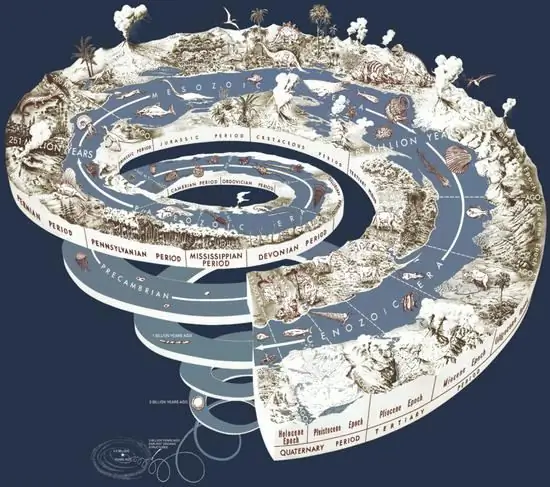
International Stratigraphic Scale
The appearance of this system is an important discovery in the history of mankind. It is the basis of stratigraphy. Methods for obtaining information about the geological history of the development of the earth's crust were discovered using the planetary scale. The MSS is a significant element that can solve many geological problems. Without this system, it would be impossible to create many maps of the world and descriptions of individual large areas, for example, tectonic, geological, paleogeographic,paleoclimatic, paleolandscape and many others.
Terminology
The concept of "general stratigraphic scale" occurs most frequently in Russian sources. Its meaning is understood as the universal nature of the system and the global scope of its application. The stratigraphic scale is a specific sequence of taxonomic units. This system can be considered as a standard of the absolute geological period during which the Earth's sedimentary shell was formed. It reflects an ideal full section of the Earth's stratisphere without various overlaps and gaps.
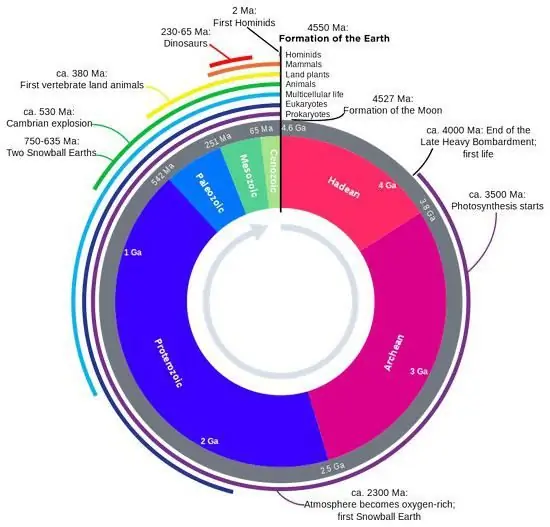
Scope of application
This system is widely used as a ruler for individual geological segments. It is also used to determine the relationship of any intervals of the stratisphere. At the same time, their one- or multi-recurrence is established. All of the above elements make the international stratigraphic scale the basis for compiling a chronology of events. This measurement structure is the basis for reconstructing the geological history of the planet.
Standards
The set of elements that the stratigraphic scale includes is a geological language of a global scale. Its spelling follows the standards of the interstate agreement. The professional language is one of the many functions of the system. The International Geological Congress takes part in setting these standards. Also in this processthe union of geosciences is involved. For a long time, these structures have been organizing special representative meetings, during which regular changes are made to the ISC. At the last meeting of the International Geological Congress, it was called the geological time scale.
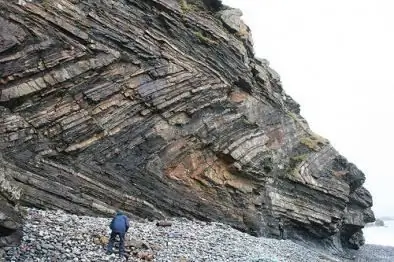
ISS units
These elements are not reified paleontological systems or biostratigraphic structures. These subdivisions have only a temporal meaning, that is, a chronostratigraphic one. For this reason, they are not used to separate and interconnect sections directly. The divisions that the stratigraphic scale includes, in fact, represent only some time intervals. They, in turn, are represented in rocks. Upon the appearance of a certain feature on the site, their boundaries are fixed. This is best done under the right conditions. The feature must be isochronous, preferably of a chemical or physical nature.
Modern realities
Currently, there is such a variant of the international stratigraphic scale, which is mainly based on regional units. In particular, on the Western European system. It has its own historical and geological character. The stratigraphic scale with tiers shows the natural stages of development of certain areas of the Earth's surface, as well as the biota that inhabited it. At the same time, one cannot deny the obvious - the historical and geologicalThe principle really works. However, its application is effective only in the area of any one region or sedimentary basin. The use of this item in the development of the international stratigraphic scale is not possible. This is due to the fact that the stages of development of different sites are often not similar in the duration of time intervals. However, they are synchronized in a certain way due to the influence of global factors.
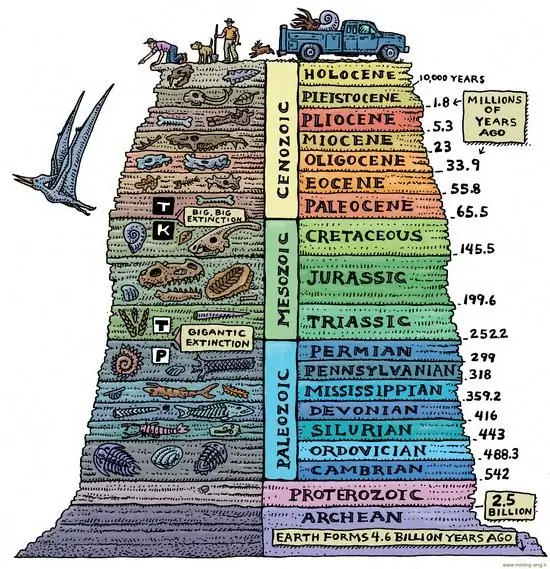
Main trend
Entering the linear scale of geological time in years is carried out through a combination of many elements. It is necessary to use all factors and dated events of global and regional scale. Other stratigraphic elements are also needed.
Factors hindering completion of the ISS
The Interdepartmental Strategic Committee of Russia has severely criticized the latest development of the system. The fact is that the domestic organization decided to continue to follow geological traditions. The Russian Committee is refusing to use the international strategic scale exactly in the form in which it is functioning now. This is due to the peculiarities of its intervals, terminology and nomenclature. All these elements, from a practical point of view, contradict those contained in the general stratigraphic scale of Russia. In addition, they have insufficient reasoning. The official subjective reason that prevents the completion of the international stratigraphic scale arebeliefs of many domestic geologists. They believe that the ISC should reflect the geological history of the planet as much as possible. This belief is fixed in the relevant code of the Russian Federation. Thus, the stratigraphic scale of Russia is a separate system today.
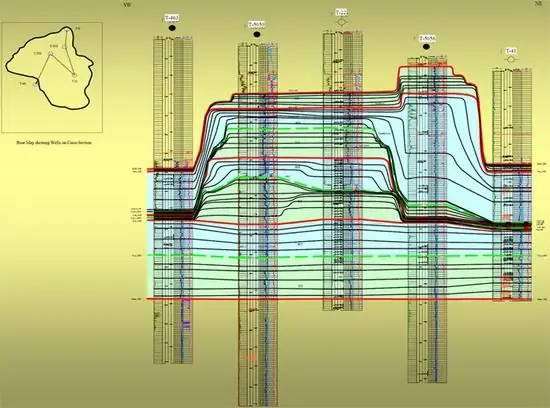
Additional information about ISS
The International Strategic Handbook reflects a set of data relating to the main aspects of the system: principles, definitions, concepts, categories, which includes a stratigraphic scale, procedures, and so on. This system consists mainly of standard divisions, which are dated in years. Their breakdown is based on the study of the schematic arrangement of rocks. The system combines two different types of scales: chronostratigraphic and chronometric. The first is currently perceived as a structure for measuring the schematic arrangement of rocks with standard areas that are selected in the stratotypes of the boundaries. The second kind is based on duration units. For example, in years, while the standard is the second.
Main tasks of the system
The first goal pursued by the stratigraphic scale is to identify local temporal relationships. Of great importance for the geology of all regions is the determination of the relative age of the layers. These aspects are independent of any schemes of global chronostratigraphic units. Second, a standard scale needs to be developed. It is needed to establish a completesystematic ordering of certain chronostratigraphic elements. They have their own names and are applied on a regional and worldwide scale. It is assumed that this hierarchy will become the basis of the standard. It should determine the age of rock layers, and also allow them to correlate with the history of the planet. The ideal is the option in which the standard scale will fill the entire sequence without any overlaps and gaps.
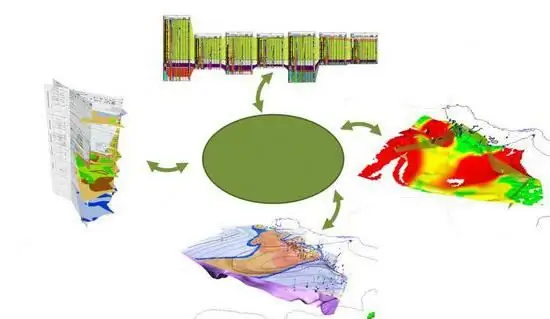
Chronostratigraphic classification
This system is an organization of breeds into divisions. It is based on criteria such as age and time of formation. The main purpose of the system is to organize the rocks that form the earth's crust into specific subdivisions. They, in turn, have their own names, which correspond to the intervals of the geological period. These elements are the basis of the temporal relationship and the system of recording the geological events of history.
Department
This element is a collection of all rock layers that are combined together on a certain basis. In particular, the process of their formation in the period of one interval matters. The division includes exclusively breeds that were formed in a certain period of the history of the planet. These elements are limited to isochronous surfaces. Their relative value and ranks are set by the duration of the time period they reflect. To compile a chronostratigraphicthe hierarchy does not need the capacity of the deposits that are part of the divisions.
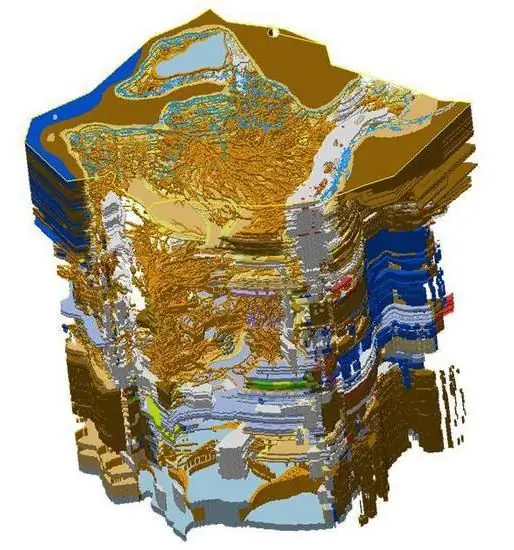
Other terms
In many directories, the designation of units of various ranks and temporary volumes is carried out using the following elements.
The chronostratigraphic complex includes the following terms:
- Tier.
- Eonoteme.
- System.
- Series.
- Eratema.
- Subtier.
Geochronological equivalents:
- Century.
- Eon.
- Period.
- Era.
- Era.
- Pendant.
Types of adjectives indicating position within a chronostratigraphic object:
- Top.
- Lower.
- Medium.
- Basal.
Types of adjectives referring to geochronological subdivision:
- Late.
- Early.
- Medium.






